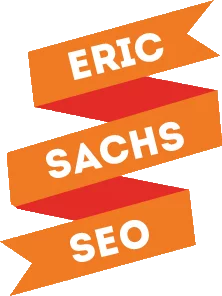If you build it, they will come just doesn’t work when it comes to websites and online businesses. With so much out there, you have to make sure people know you’re there, and that means taking action to promote your website. Sure, you can invest in social media advertising and search engine optimization, but there are many different methods to consider including in your digital marketing strategy.
Become a Fixture in Relevant Online Communities
Being known is the foundation of successful outreach. When people recognize your name, they’re more likely to respond.
To create this top-of-mind presence, you’ll need to become an active member in an online community where your target audience is. These communities are full of people you might be trying to reach, and are full of potential because they are niche.
A lot of marketers fail to leverage the high activity of the audiences in these networks because they’re focused on the short-term benefits, rather than the long-term effort. How can you become recognizable so people start to know who you are, and listen to what you have to say?
Participate in Conversations
Spend a bit of time every day taking time to engage others in conversation. Go through threads and answer questions. Ask questions. Introduce yourself. Participation is the key to getting your name to show up throughout the community.
Start Conversations
Don’t be afraid to start a conversation if you’re new to a community. You can create a post that details who you are, why you’re excited to be part of the community, and then asks others to share with you. The important thing is to respond to people who engage with you, whether or not you started the conversation.
Offer Value
The most critical part of online community participation is ensuring you offer value to the community. Don’t just blatantly self promote your products or services. People will start to ignore you and you’ll damage your reputation. If a product or service you offer could genuinely help a person, you can suggest it, of course, but it’s best to point people to your lead nurturing materials to start the relationship off on the right foot. Always maintain a professional demeanor online, behaving courteously and avoiding drama.
Publish Content on Other Websites
One of the fastest ways to build brand recognition and build backlinks to boost your SEO is to post content on other websites. For best results, these websites should be related to your product or service, or at the very least, be places where your target audience can be found. Look for industry publications, blogs, and other websites that get a lot of traffic. In the search engine optimization, business, and marketing niches, popular sites that accept contributors are Search Engine Journal, Entrepreneur, Forbes, and Inc. Not everyone will be accepted as a contributor, though, so it’s best to start with smaller websites in your niche.
Focus on Targeted Sharing
Facebook is no longer the marketing giant it was because of the limited organic reach businesses have because of algorithm changes. One of the best ways to reach more people on social media is to use targeted sharing.
This method essentially tags someone in a post with the opt they’ll share your content with their audience. You can do this in a number of ways:
- Link to sources featured in the article in a snippet you’d share.
- Link to people in the snippet who’d be interested in your article.
- Engage directly with a question or point of debate to start a conversation.
You can use Twitter’s advanced search tools to find people in your niche that are also close to you geographically, using hashtags and more.
Connect with Influencers
Host an influencer event. Pick a location to plan event that appeals to the influencers you’re most interested in working with. Start small by doing something locally and inviting influencers to your retail location, or plan something bigger than lasts all weekend and includes your brand while also highlighting influencers and their interests.
Spend some time finding influencers to engage with online before trying to hire them to work with your brand. There are several influencer marketing platforms available to help make your search easier.
Ask Your Network How They Want to be Marketed With
Once you’ve built a small network, reach out to them via email to find out how they want to work with you. This fosters a partnership and shows the current network and future customers you want to market with them, rather than at them. Whatever you do, just make sure you follow through on what the majority of people ask of you with your marketing. If they tell you they don’t want you to send them a ton of email updates – then don’t. Acting differently from what their feedback suggests you should do will create issues with trust.
Stay Authentic
Authenticity matters. It helps humanize your brand, which makes it easier for customers to connect with you and relate to you. One of the ways you can promote authenticity in your brand and marketing is to take the time to write a blog post about when you or your brand weren’t at your best. Don’t focus on perfection; focus on honesty and transparency instead. Own your mistakes. Tell people about a decision you made that you learned from. You can use this lesson to help others, and this helps foster a stronger connection with those people.
Though it can be nerve-wracking because you want to get as many people to your website as fast as you can because you’re excited, it’s important to realize that not everyone will have that excitement – especially if they’ve never heard of your or your company. Focus on the big picture and play the long game. It’s the relationships you make and connections you build that make all the difference in your success in the end. Putting more effort there now will definitely pay off.
